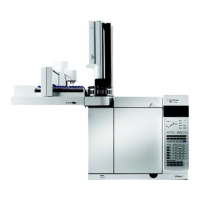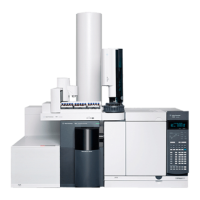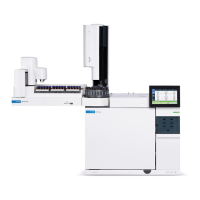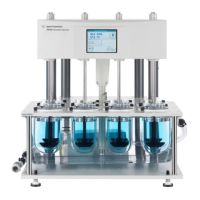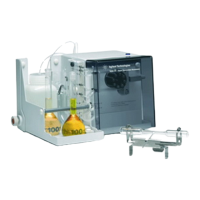Detectors 5
Advanced Operation Manual 209
Helium, either as carrier or makeup gas, may cool the
detector gases below the ignition temperature. We
recommend using nitrogen rather than helium.
Lighting the FPD flame
Before trying to light the flame, have the detector at
operating temperature. Removing the condensate tubing may
help, but be sure to replace it before making runs.
It is difficult to light the flame with the flows shown in
Table 53, particularly in the sulfur mode. If the flame will
not light with the sulfur mode flows shown, change to the
phosphorus mode flows. After ignition, gradually reduce the
flows to the sulfur values. Some experimentation will be
needed.
When either of the flame ignition methods in this section is
used, the FPD automatically performs this sequence:
1 Turns all detector gases—air, hydrogen, makeup—off.
Carrier remains on.
2 Sets air flow to 200 mL/min.
3 Turns the glow plug ignitor on.
4 Ramps the hydrogen flow from 10 to 70 mL/min.
5 Resets the air flow to the air flow setpoint.
6 Resets the hydrogen flow to the hydrogen flow setpoint.
7 Turns the makeup gas on.
8 Compares the signal change with the Lit offset value. If the
change is greater than Lit offset, declares the flame on
(lit). If it is less, declares the flame off (not lit).
For this process to work, there must be enough air pressure
to the pneumatics module to provide 200 mL/min flow. We
recommend a supply pressure of 90 psi.
Detector gases
Hydrogen 50 75
Air 60 100
Carrier + makeup 60 60
Tabl e 54 Recommended flows (continued)
Sulfur mode flows,
mL/min
Phosphorus mode
flows, mL/min

